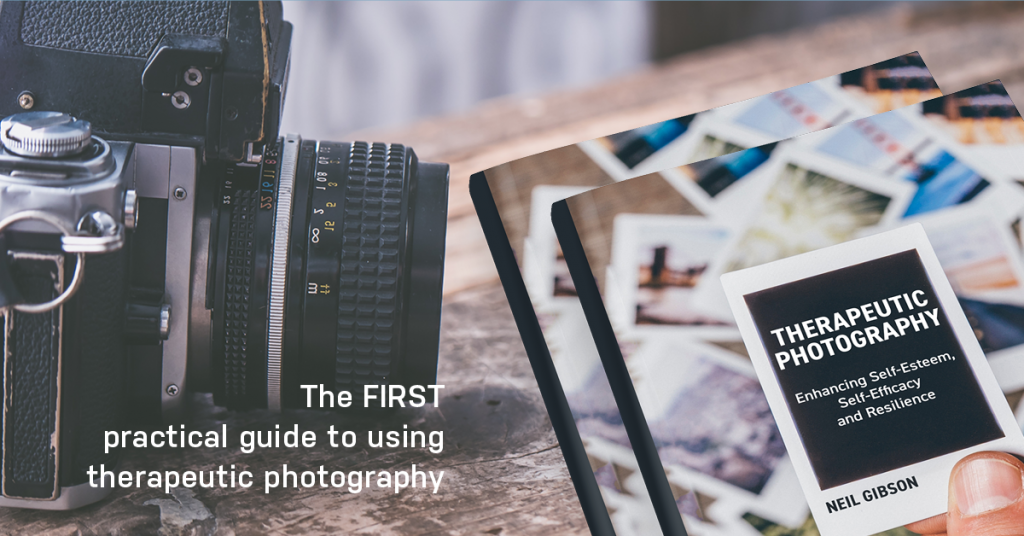Neil Gibson is a social worker and Senior Lecturer at Robert Gordon University, Aberdeen. He runs a Continuing Professional Development (CPD) course for professionals interested in using therapeutic photography in their work. We caught up with Neil upon the publication of his latest book, Therapeutic Photography to ask a few questions about a course he recently facilitated for those people who had caring responsibilities for a family member. 
As part of your research for your book Therapeutic Photography you ran a number of different projects with different groups. Would you like to tell us more about it?
Yes, as a social worker I run courses for people interested in using therapeutic photography in their work as well as for people who may have significant health issues, autism or mental health problems. One of the groups I was keen to work with was people who had a caring responsibility for a family member. One of our local agencies was in the process of setting a support group up for this population – that was lucky! – and I offered my services to facilitate a therapeutic photography group. We met every week for a period of 6 weeks to work and engage in the project.
Did you encounter any difficulty at all?
At first it was not clear what caring responsibilities people had, but as the group progressed the individuals shared experiences of caring for children with autism, relatives with chronic degenerative conditions, and long term illnesses. Bits of information about caring responsibilities were shared in the initial stages of the programme as participants chose photographs on their phones and cameras to share with others and reveal aspects of their personalities, characters, and lives.
How did the programme progress?
Very quickly, the participants got into the creative side of the programme and were happily exploring the environment to capture images that represented abstract concepts such as emotions and relationships, and then eagerly sharing the images with the group and explaining the concept behind the image. This appeared to normalise conversations about things that might have ordinarily been difficult to discuss, and the fact that an issue or concept had been objectified and externalised within a photograph appeared to make it so much easier for the participants to explore.
How do you think the programme helped each participant?
I think it helped each one of them to explore their self-perceptions, their strengths and weaknesses, their environment, and their society. Each week we would work through a number of exercises with the cameras, and finish each session by setting a task for participants to work on. Over the weeks the participants produced almost 500 images and were able to explore the meaning behind each one. What became apparent was that this was not a support group, or an opportunity to wallow in the challenges of caring, it was an opportunity to have fun, to learn, and to re-establish a sense of identity.
How do you think people relate to the idea – and the reality – of being a carer?
For many carers, the label of “carer” can be all consuming and it can be difficult to assert your own identity. Through therapeutic photography the participants explored this issue in the initial stages, acknowledging similarities between each person and establishing a sense of community. As the weeks progressed, this was strengthened and the participants moved beyond similarities to assert differences. Throughout this, there were times when they would learn from one another about coping strategies and resilience techniques. Towards the end of the programme, each participant was exploring their self-concept – yes, they were a carer, but this was just a fraction of their identity and they were so much more than this – the photographs gave them permission to explore possibilities and to plan a future direction for themselves.
Why photography?
Photography can be fun. It gives us permission to explore our surroundings, and with a bit of structure and guidance, this can be enhanced to explore our selves. By doing this in a group, a sense of play can also be introduced and this can provide a safe space to explore in. My work in therapeutic photography accentuates this sense of play and safety to build an opportunity for identity to be explored and for a sense of empowerment to be fostered.
Therapeutic Photography: Enhancing Self-Esteem, Self-Efficacy and Resilience by Neil Gibson is published by Jessica Kingsley Publishers, 2018. This easy-to-use guide explores the theory and practice of therapeutic photography, an effective intervention for improving self-esteem, resilience and self-efficacy in a wide range of clients, including those with autism, dementia and mental health problems. For more information visit our website.